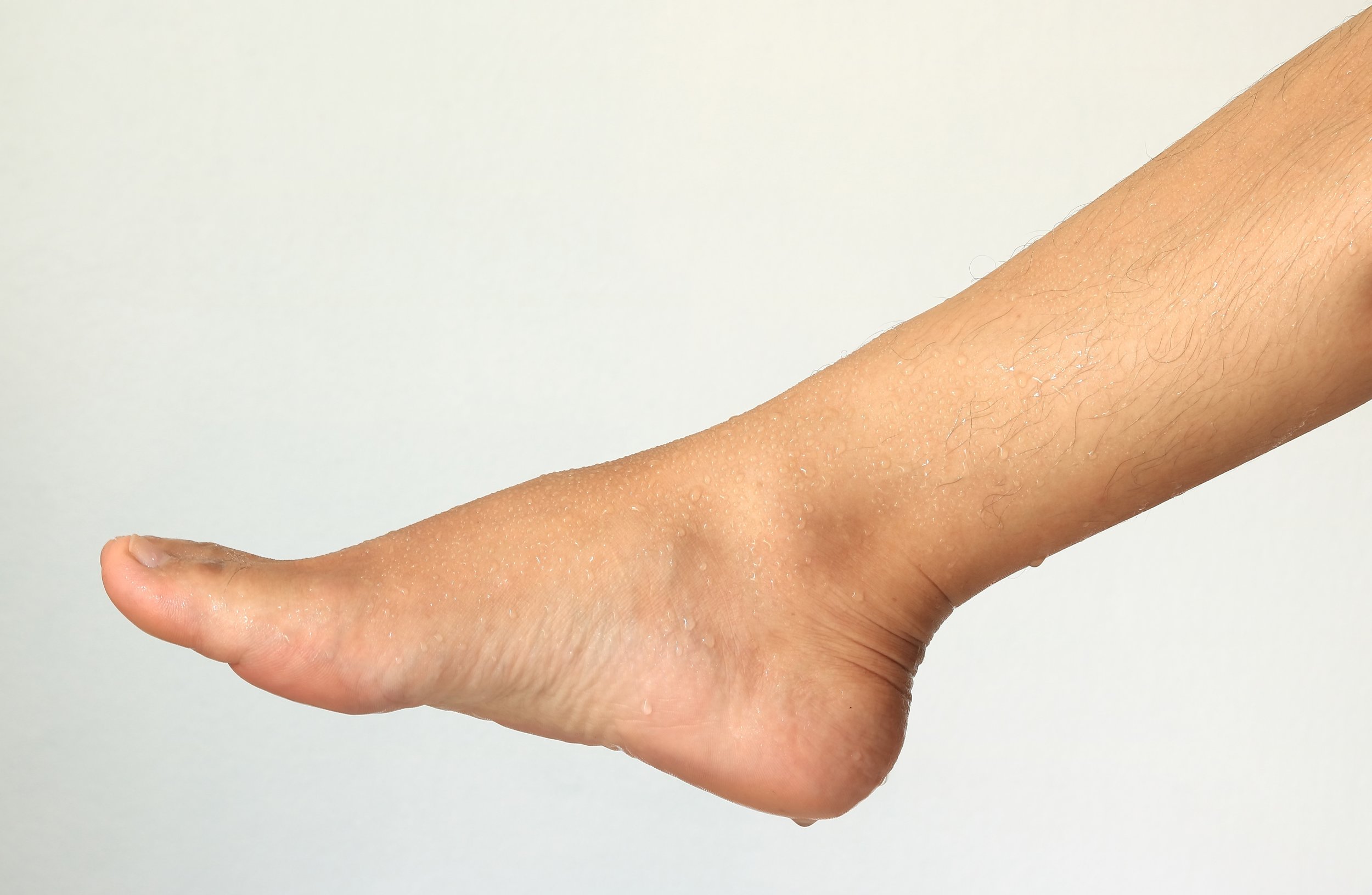Sweating is a normal bodily function that occurs at the skin as a way for the body to naturally cool itself. Your feet have approximately 250,000 sweat glands, which produce 250 mL of sweat per day.
Let’s focus on our feet, and the sweating that occurs there. Sweat glands are more concentrated on the feet than in any other part of the human body. This amount of sweating is normal and is considered healthy. Excessive sweating however, could be due to a condition called hyperhidrosis, which can not only affect the skin on the feet, but can lead to other health issues such as a fungal infection in the toenails or skin (tinea pedis), or foot odour.
Hyperhidrosis is not necessarily related to exercise or heat exposure, and in most cases there is no identifiable cause. Hyperhidrosis of the feet can present in many different ways, however an element of maceration is almost always present. Maceration describes the skin being “soggy,” or severely over hydrated. Skin may also appear more white than usual, and in severe cases pitted keratolysis (tiny holes, or pits in the skin) is visible.
Some people experience hyperhidrosis as a result of another underlying health condition. In these cases it is classified as secondary hyperhidrosis and may be from:
Obesity
Gout
Menopause
A tumour
Mercury poisoning
Diabetes
Hyperthyroidism
Treatment for sweating disorders
The podiatrists at Fitzroy Foot and Ankle Clinic are very experienced in diagnosing sweating disorders of the feet and are qualified to provide the most appropriate and suitable treatment and management strategy for each individual case.
The typical treatment for hyperhidrosis involves
Identifying if there is a systemic or underlying cause for and referring to the most suitable specialist to address any underlying issues
Using aluminium-based antiperspirants
Daily showers or baths
Wearing clothes made of natural materials that allow the skin to breathe
Wearing moisture wicking socks made of natural or acrylic fibre blends to assist with moving moisture away from the skin

